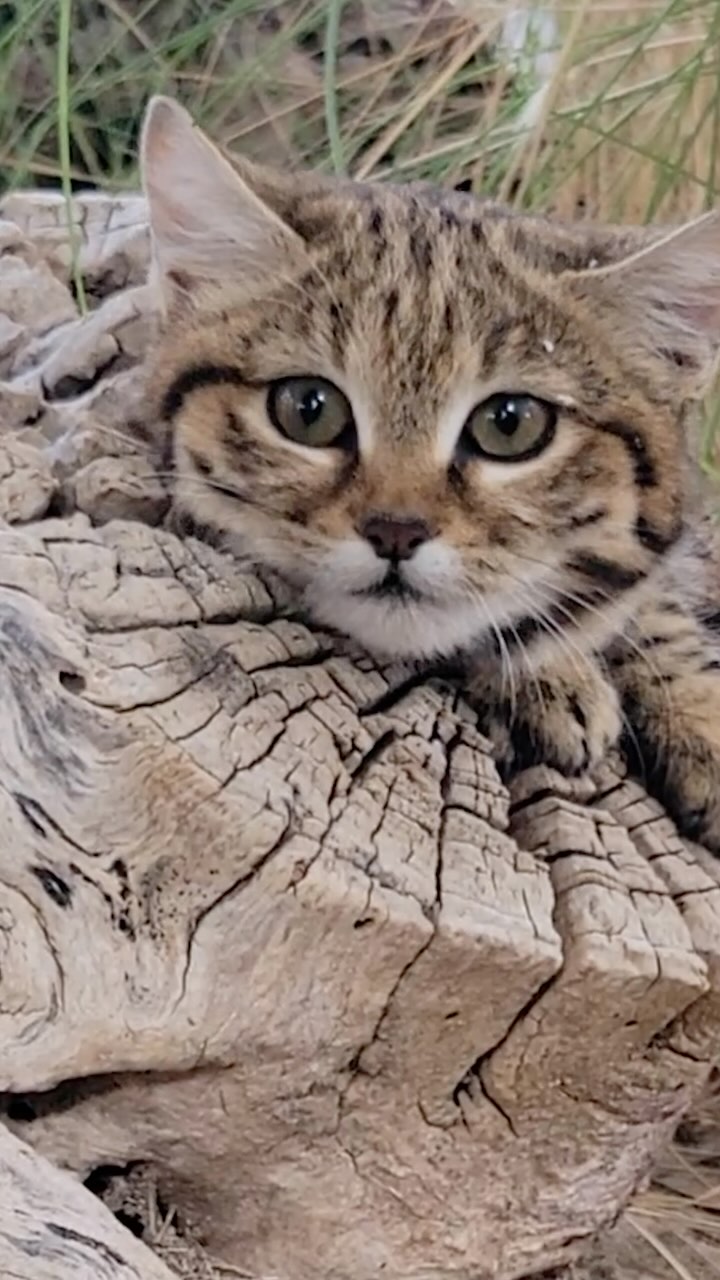- The black-footed cat, one of the smallest and deadliest wild cats, thrives as a nocturnal hunter in Africa’s grasslands and savannahs.
- Despite their small size, black-footed cats exhibit remarkable hunting prowess, boasting a 60% success rate in capturing prey.
- These feral cats face numerous threats from habitat loss, human encroachment, and climate change, demanding urgent conservation efforts.
- Understanding the intricate behaviors and ecological roles of black-footed cats can significantly contribute to wildlife conservation strategies and zoo management practices.
Imagine an animal resembling a plush toy with an adorable face and pint-sized body. Yet beneath this charming exterior lies a formidable predator. This creature is none other than the black-footed cat, renowned for its uncanny hunting efficiency. Indigenous to the arid grasslands of southern Africa, this elusive feline is not like other regular cats—she’s a cool cat, a cool woodland killer to be exact, although small in stature.
At an average weight of just 2 to 6 pounds and a length between 14 to 20 inches excluding the tail, the black-footed cat stands as one of the smallest wild cats worldwide. But size does not dictate might, especially where Meg, a black-footed cat in captivity, is concerned. Meg headlines the growing fascination with this species in natural reserves and selective zoos focused on species conservation and education.
Black-footed cats exhibit incredible predatory skills, largely due to their exceptional adaptations. They have large ears that enhance their auditory capacity, enabling them to pinpoint the slightest sound amidst the sprawling African savannah. Their excellent night vision allows them to spot and stalk prey under the cover of darkness, where they conduct the bulk of their hunting.
These cats are nocturnal, opting to hunt in the quietude of night, free from the oppressive heat and additional threats of daylight. Each night, a black-footed cat travels up to 20 miles, covering extensive ground in search of sustenance. Their diet mainly consists of small mammals, birds, and insects, which they pursue with an impressive 60% success rate, a figure unmatched by most large cats such as lions and leopards.
Understanding the behavior and ecological impact of black-footed cats is crucial. They play a significant role in controlling populations of pests in their natural habitat. Without them, the balance within ecosystems could pivot, emphasizing the need for their continued study and protection.
The fierce yet diminutive black-footed cat is under threat. With human development rapidly expanding into natural habitats, these cats face increased pressure and fragmentation of their living spaces. Agriculture and livestock farming are significant drivers of habitat loss, causing narcotic cats to lose the grasslands vital for hunting and refuge effectively.
Moreover, the changing climate brings erratic weather patterns, affecting the availability of prey and water resources they depend on. Many black-footed cats also fall victim to indiscriminate trapping and poisoning meant for larger predators, underscoring the peril they endure due to human activity.
Conservation initiatives tailored to protect these small but significant predators involve preserving their habitats and establishing protected areas to mitigate human-wildlife conflict. Scientific reserves and zoological institutions play a pivotal role in educating the public about the integral part black-footed cats play in their ecosystems.
Specialist breeding programs held in reputable zoos and wildlife centers are also stepping stones towards securing a future for black-footed cats. These programs aim to increase populations in controlled environments before reintroducing them into protected wild areas. Such measures help not only to conserve the species but also to educate the public on wildlife stewardship.
In zoos, these cats act as ambassadors for their species. Facilities design captivating exhibits to engage visitors, allowing them to appreciate the value of conserving such a unique predator. Educational programs focus on their adaptations, role in the ecosystem, and threats they face, fostering a deeper public understanding and concern for their preservation.
Beyond face-to-face conservation efforts, global awareness campaigns leverage social media to reach broader audiences. Videos like the Instagram reel featuring Meg not only entertain but also educate followers about the fascinating world of black-footed cats.
By spotlighting their predation prowess and ecological value, such platforms can spark interest in conservation action. A wider audience contributes collectively to wildlife preservation and funding of conservation projects. Campaigns connecting people with the stories of individual cats like Meg stimulate empathy and awareness, mobilizing support to tackle the pressing challenges these predators encounter.
Black-footed cats stand symbolically for the innocuous yet mighty forces in nature that maintain ecological balance. Understanding and preserving this feline ensure that we protect not just a single species, but a linchpin in their environment. Whether through guided zoo watch tours or virtual educational endeavors like social media channels, elevating the black-footed cat’s story reaches into broader realms of conservation impact.
This compact predator offers vast insights into survival strategies and balance within our planet’s ecosystems. Its plight represents an urgent call for proactive conservation solutions that benefit both the species and the complex web of life they inhabit. By fostering an expansive understanding and appreciation of the black-footed cat, we contribute meaningfully to safeguarding the biodiversity that enriches our world.
*****
Source Description
Meg’s not like a regular cat, she’s a cool cat 😺
Or more specifically, a black-footed cat. Don’t let her looks fool you, Meg is one of the deadliest cats in the world, especially if you’re a mouse. Black-footed cats are lethal predators well-known for their 60% success rate during each hunt.


